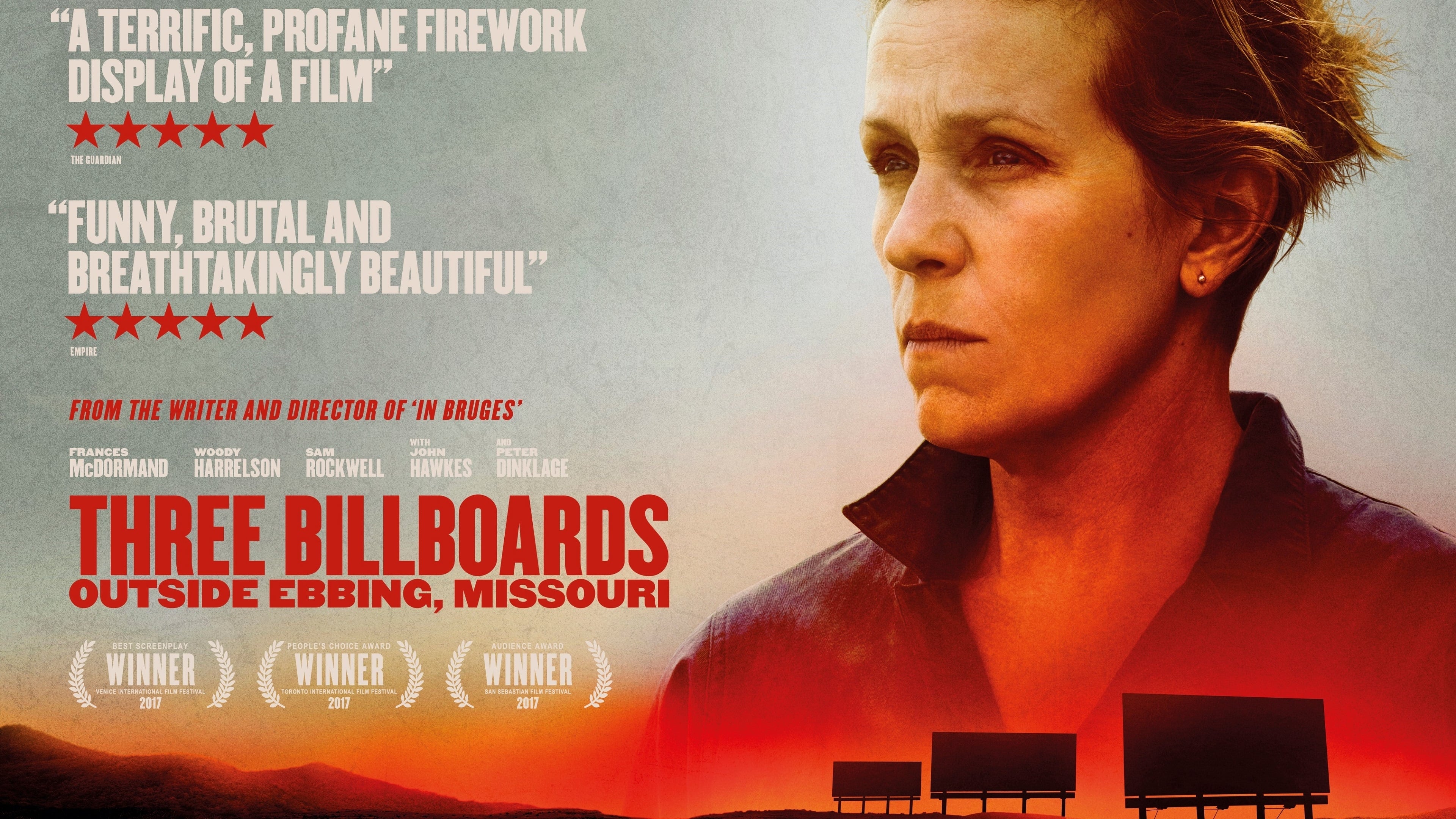

Bill Willoughby (Woody Harrelson), the Ebbing police chief, is well respected and popular with the local community, who take it as read that he’s been doing his best to find Angela’s killer. Posting the notices, although it may therefore be a futile gesture from the point of view of getting justice for Angela Hayes, has an impact nevertheless. It’s pointed out to Mildred – though she’s already well aware – that few vehicles nowadays use the road the billboards stand beside. (Reduced in size in a long shot, they bring to mind the three dark-framed photographs among Lee Chandler’s few possessions in Manchester by the Sea.) The billboards’ quality of sadness derives mainly from the tragedy that has consumed Mildred’s life but their desuetude (it turns out they last advertised in 1986) adds to it, implies that Ebbing is a place somehow left behind.

The structures holding them, viewed from the back, take on the look of stark memorials.

Mildred’s angry messages – black letters on a red ground – are decidedly confrontational. And it’s not long before the billboards in Martin McDonagh’s film have become a truly formidable image, from two aspects. Even before these words appear on them, the hoardings have something to say: the dim palimpsest of old adverts indicates their long disuse. The notices she has posted on them – ‘Raped while dying’, ‘And still no arrests’, ‘How come, Chief Willoughby?’ – refer to the assault and murder of Mildred’s teenage daughter Angela, seven months previously. Mildred Hayes (Frances McDormand) rents three billboards near her home in Ebbing, Missouri.


 0 kommentar(er)
0 kommentar(er)
